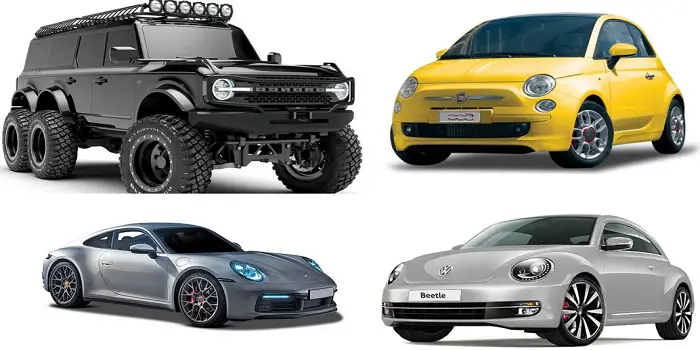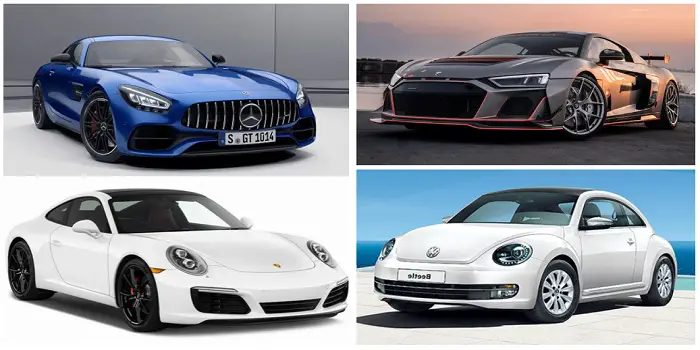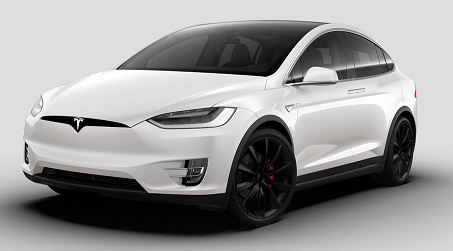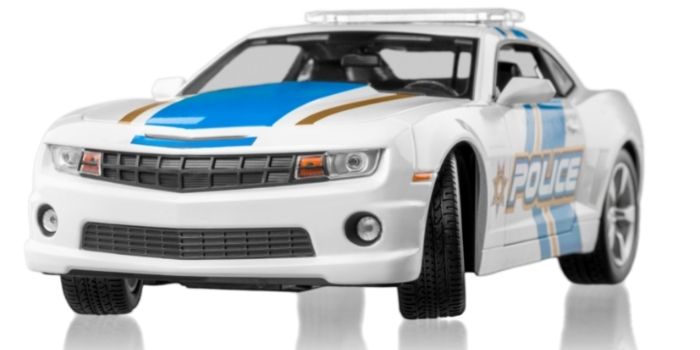
Police cars are specially equipped vehicles that are used by law enforcement officers to help them perform their duties.
Police cars play an important role in keeping communities safe by helping to deter crime and responding quickly to emergencies.
In many cases, police cars are also used to transport prisoners or evidence to and from crime scenes.
In this post, we’ll explain the different types of police cars and what each one is used for. Stay safe out there!
Types of Police Cars
There are many different types of police cars, and each of them is designed for a specific purpose.
Here are some of the most common types of police cars:
1. Unmarked Cars
Unmarked police cars are vehicles that are used by law enforcement officers to blend in with regular traffic.
These cars do not have the traditional markings that you would see on a police car, such as a badge or emergency lights.
Instead, they often look like regular civilian vehicles. Unmarked police cars are often used for surveillance and undercover work.
Because they don’t stand out, they can help officers to gather information without drawing attention to themselves.
In some cases, unmarked police cars may also be used for high-speed pursuits.
While they are not as visible as marked police cars, they can still be easily identified by other law enforcement officers.
2. Marked Cars
Marked police cars are those that have visible markings that indicate they are part of the police force.
These markings can include the department’s badge, name, or other identifying information.
In some cases, marked police cars also have emergency lights or sirens.
The purpose of marked police cars is to help the public identify and locate police officers when they are needed.
This can be especially helpful in emergency situations when every second counts.
3. Patrol Cars
Patrol police cars are the backbone of any police force.
They are the vehicles that are most often seen on the streets, responding to calls for help and keeping the peace.
Patrol cars are typically outfitted with all the necessary equipment for a police officer to do their job, including radios, lights, and sirens.
In many cases, patrol cars are also equipped with cameras, which can be used to collect evidence and monitor suspects.
4. Undercover Cars
Undercover police cars are unmarked vehicles that are used by law enforcement officers to apprehend criminals or gather intelligence.
These cars are typically old and run-down, in order to blend in with their surroundings.
While undercover cars might not look like much from the outside, they are usually equipped with advanced technology, including hidden cameras and GPS tracking devices.
In addition, undercover cars often have bulletproof windows and doors, in case of attack.
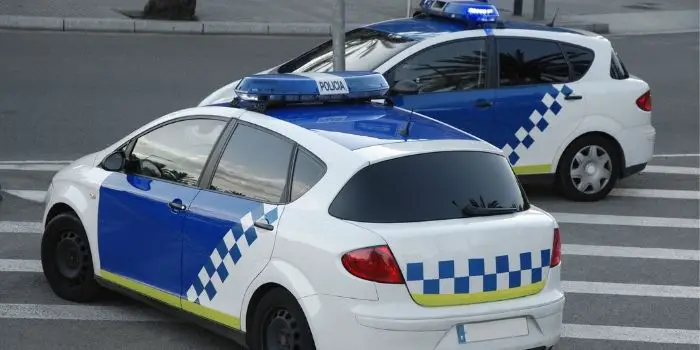
5. SWAT Vehicles
In today’s world, police departments have to be prepared for anything. That’s why many have started using SWAT vehicles.
SWAT stands for Special Weapons and Tactics, and these vehicles are designed to handle high-risk situations.
They’re usually heavily armored and come equipped with state-of-the-art technology, including night-vision cameras and gas masks.
In addition, SWAT teams are specially trained to deal with hostage situations, active shooters, and other dangerous scenarios.
Thanks to their speed and firepower, they help ensure that police are always ready to protect and serve.
6. K-9 Units
K-9 units are police cars that are specially outfitted to transport dogs.
The dogs are trained to assist police officers in a variety of tasks, such as tracking down criminals, sniffing out drugs, and searching for missing persons.
The cars have a number of features that make them ideal for working dogs, such as spacious kennels, water bowls, and ventilation systems.
In addition, the cars are usually equipped with special heaters to keep the dogs comfortable in extreme climates.
7. Traffic Enforcement Units
Traffic enforcement unit police cars are specially designed automobiles that are used by police officers to help enforce traffic laws.
These cars are equipped with special features that allow them to be more visible and effective in enforcing traffic laws. Some of these features include bright lights, sirens, and decals.
The purpose of these cars is to help make the roads safer for everyone by helping to enforce traffic laws.
These cars help to deter people from speeding, tailgating and driving recklessly.
8. Mounted Units
Mounted units are a common sight in many cities, and they play an important role in law enforcement.
Mounted units typically consist of police officers on horseback, and they are often used for patrolling large areas or crowd control.
In many cases, mounted units are also equipped with special equipment, such as video cameras or riot gear.
How Fast are Police Vehicles?
Ever wondered just how fast a police car can really go?
The answer might surprise you.
Most police cruisers are built for more than just looking intimidating—they can hit speeds from 120 to 155 mph, depending on the model.
Take the Dodge Charger Pursuit, for example—it can roar up to 155 mph, making it a true speed demon on the streets.
The Ford Police Interceptor Utility (aka the Explorer) isn’t far behind, topping out around 148 mph, while the Chevy Tahoe PPV still manages a respectable 125 mph.
These aren’t your average cars.
Under the hood, they pack modified engines, beefed-up suspensions, and performance tires, all designed to give officers the edge when seconds count—whether it’s racing to an emergency or chasing a suspect who thought they could outrun the law.
Bottom line: when it comes to speed, police cars mean business.
What are the Cars That Look Like Cop Vehicles?
Ever spotted a car that looks like it just rolled out of a police station but isn’t flashing a badge?
These are usually replica police cars—vehicles modified for movies, events, or even enthusiasts who love the cop-car aesthetic.
They often sport the classic black-and-white paint scheme, decals, roof-mounted light bars, and sometimes even fake sirens.
Popular base models include the Dodge Charger, Ford Explorer, and Chevrolet Tahoe, since these are the same models real police departments use.
Some owners take it further with performance upgrades to match the look with a bit of “street-ready” style, but make no mistake—these cars don’t have law enforcement powers.
Using real police lights or sirens on public roads can land you in serious legal trouble.
Beyond replicas, some vehicles may naturally resemble cop cars because manufacturers make them in the same body styles as patrol vehicles, making them an easy canvas for creative customization.
Whether for fun, filming, or car shows, these cars capture the unmistakable aura of law enforcement without the badge.
What Type of Car is Used by Police for Patrolling and Arresting Criminals?
Police patrol cars aren’t one-size-fits-all—they’re specialized tools designed for different law enforcement needs tailored to their tasks, from routine patrols to high-speed arrests.
First, we have sedans, like the Dodge Charger Pursuit. These are the classic police cruisers: fast, agile, and perfect for high-speed chases and routine patrols in urban and suburban areas.
Then there are SUVs and crossovers, such as the Ford Police Interceptor Utility (Explorer) and Chevrolet Tahoe PPV.
These vehicles offer more space for equipment and passengers, better visibility, and can handle rougher terrain, making them ideal for both city streets and rural patrols.
Specialty vehicles also exist, like unmarked cars used for surveillance or highway enforcement, blending in while still packing the performance to catch speeders.
There are even motorcycles, which excel in traffic-heavy areas or events where maneuverability is key.
Finally, some departments use electric or hybrid patrol cars, focusing on fuel efficiency and lower emissions without sacrificing performance.
Each type of patrol vehicle is chosen carefully to match the unique demands of law enforcement—whether it’s speed, space, stealth, or efficiency, there’s a perfect ride for every mission.
The Conclusion
Different types of police cars are designed to suit different needs.
SWAT vehicles are designed for high-risk situations, while K-9 units help transport dogs.
Traffic enforcement unit police cars help make the roads safer, and mounted units play an important role in patrolling large areas or crowd control.
Each type of police car has its own purpose, and each plays a vital role in law enforcement.

Based in Orem (Utah) John Paterson graduated from Utah Valley University and has begun writing in 2009. He has a large wealth of experience in writing articles related to cars, automotive repair, wheels, cleaning/maintenance, and much more. He has also written instructional articles in a similar niche for a few online publications as well. Currently, he works as a mechanic in his personal garage shop where he loves serving his countrymen from his heart.

